Welcome to SpiceTopia’s Masala Dabba Recipe Collection!
A masala dabba is the ingenious Indian answer to spice organization. You know how you need just a pinch or two more of cumin or a sprinkle of chili powder to make the dish just perfect. In the middle of cooking, opening a jar or package of spice is an annoyance not to mention a messy endeavor.
The Masala Dabba fixes that problem!

Masala dabbas are boxes, often in the shape of a circle or square, that usually hold up to seven spices in katoris. Katoris are small open containers within the larger dabba which allow you to easily access your spices anytime during the cooking process. An inner and outer lid help to keep the spices fresh after cooking time is over.
SpiceTopia’s Masala Dabba’s katoris are filled with:
- Green cardamom
- Mustard Seed
- Coriander
- Mustard Seed
- Methi
- Cumin Seed
- Kashmiri chili powder
- Turmeric
We’ve also tucked in packages of Asafoetida, Cinnamon, and Amchur.

Masala Dabba Recipes
So now that you all these beautiful spices, what to do with them?
We’ve gathered a few of our favorite recipes to get you started on your Indian cooking journey. These recipes are basic ones with techniques that will serve you well as you move on to more complex recipes.
Keep in mind that just like any other type of cuisine, experimenting with flavors is allowed and is what will make each dish uniquely your own.
Curry Powder Recipe

You may have noticed that curry powder is missing from the above list of spices. Curry powder is not a traditional Indian spice. It was actually created to satisfy British and European tastes. The term “curry” in Indian cooking actually refers to the sauce (or gravy) used to flavor meat or vegetables.
Read more about the history of curry powder right here: The Story of Curry Powder
Instead in India, individual spices would be used to create specific flavors for different dishes. This basic curry powder recipe can be made with the spices in your Masala Dabba. As you experiment with Indian spices and recipes, feel free to change this recipe to suit your taste and what you are cooking with.

Chicken Curry Recipe

This recipe is a simple curry recipe to introduce you to our “Indian” Curry Formula.
This curry recipe uses chicken, but would also be delicious made with tofu, potatoes, or even chickpeas. This basic recipe uses a curry powder. Following the above curry powder recipe, you can mix things up and create your very own curry powder!

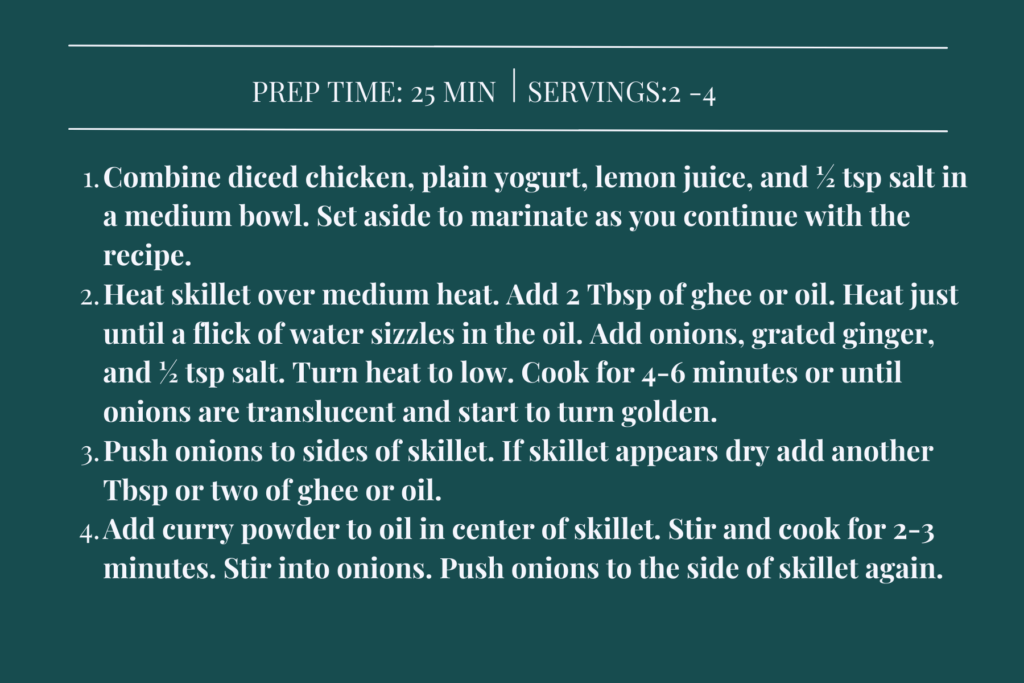

Butter Chicken (Murgh Makhani)
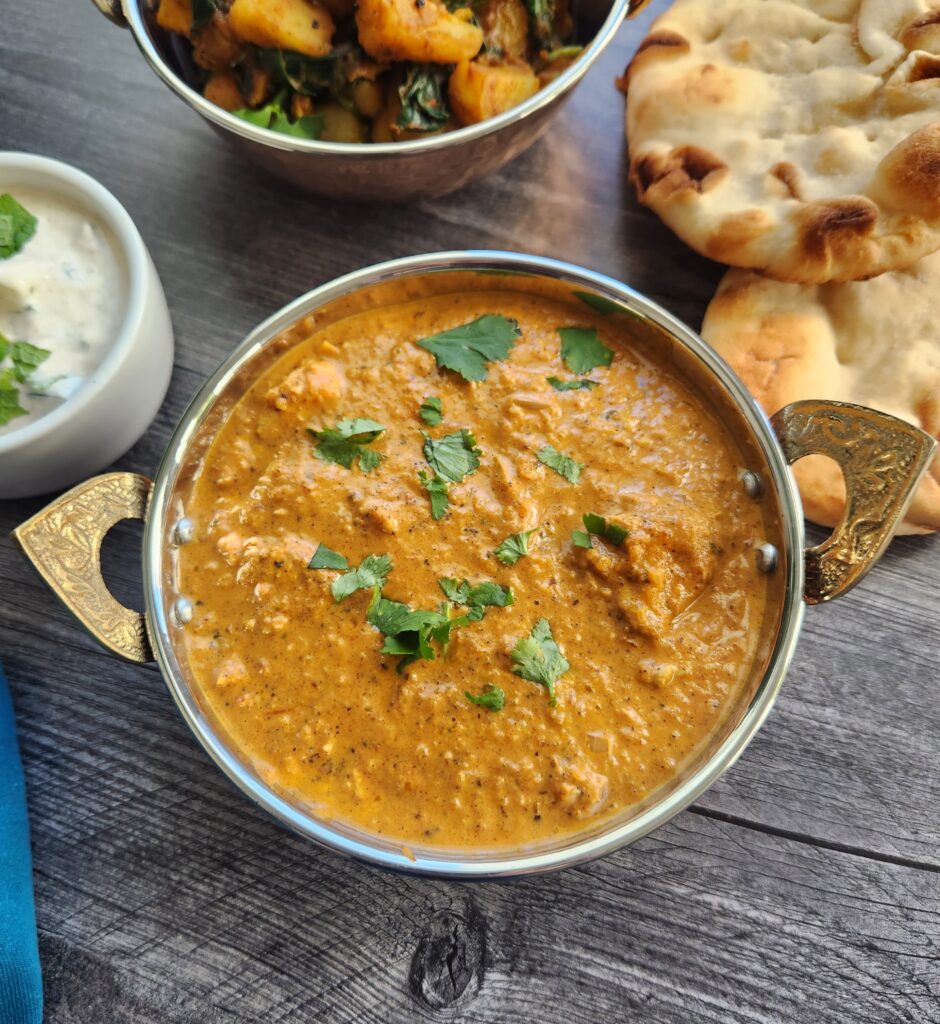
Butter Chicken is perhaps the most famous Indian recipe and it is an authentic Indian recipe from Northern India. Called Murgh Makhani in India, it was invented in 1948 by Kundan Lal Gujral, a chef at Moti Mahal restaurant in Delhi. Murgh translates to chicken while Makhani means luxurious, so the literal translation is Luxurious Chicken.
The creamy rich sauce of onions, yogurt, cream, butter, tomatoes and spices coating the chicken certainly does make this dish luxurious!
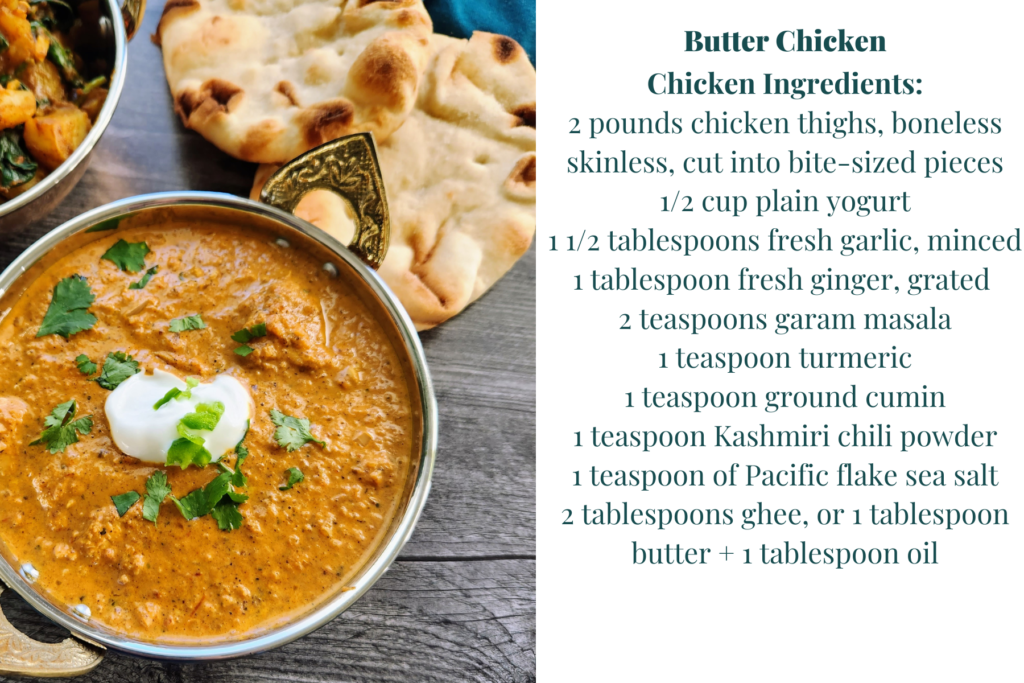


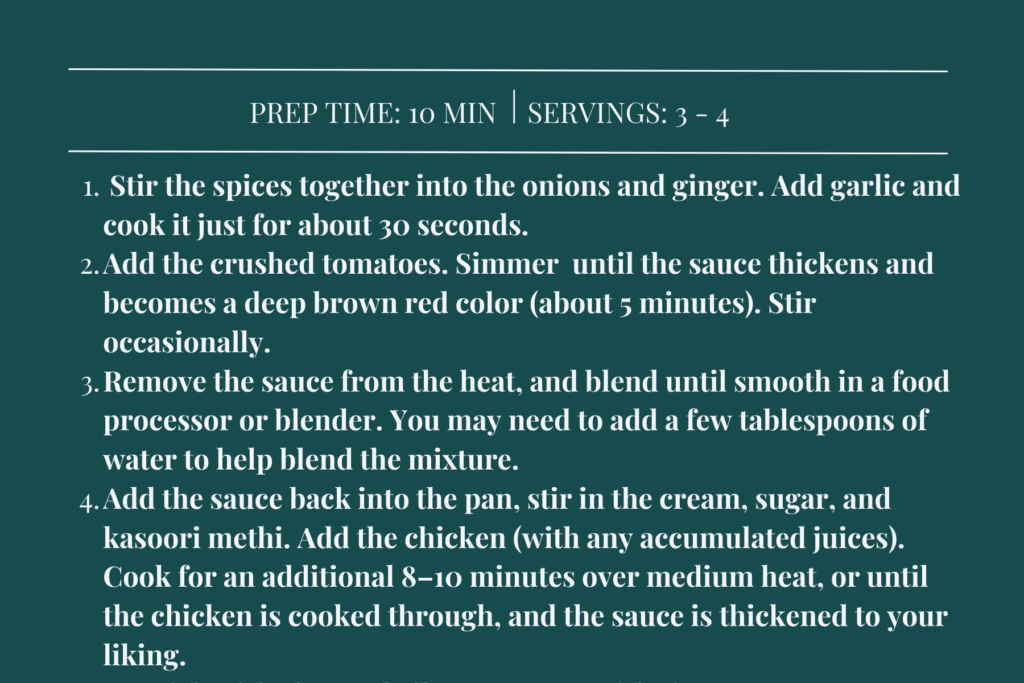
Tarka Dhal Recipe

Dhal translates into legume or lentil. Tarka is a specific way of adding flavor and spice to a dish.
This dhal or lentil recipe is a traditional Indian side dish that pairs well with curries or makes an easy lunch on its own.
It calls for simply cooking lentils before frying up spices to add lots of flavor to the lentils. This method of frying spices is a classic Indian technique called tarka. It’s a way to add lots of flavor to simple dishes like lentils, stir fried veggies, roasted potatoes, and our favorite, popcorn!
All of the spices found in your Masala Dabba (except cardamom) will work in a tarka. Feel free to play around with different combinations of spices. Adjust the amount of chili powder or methi leaves. Add a pinch of amchur for a hit of sour. Use cumin instead of coriander seeds. Once you start making tarkas, we think you won’t stop as they are an easy way to add flavor to just about anything!


Saag Aloo (Spiced Potatoes with Spinach)
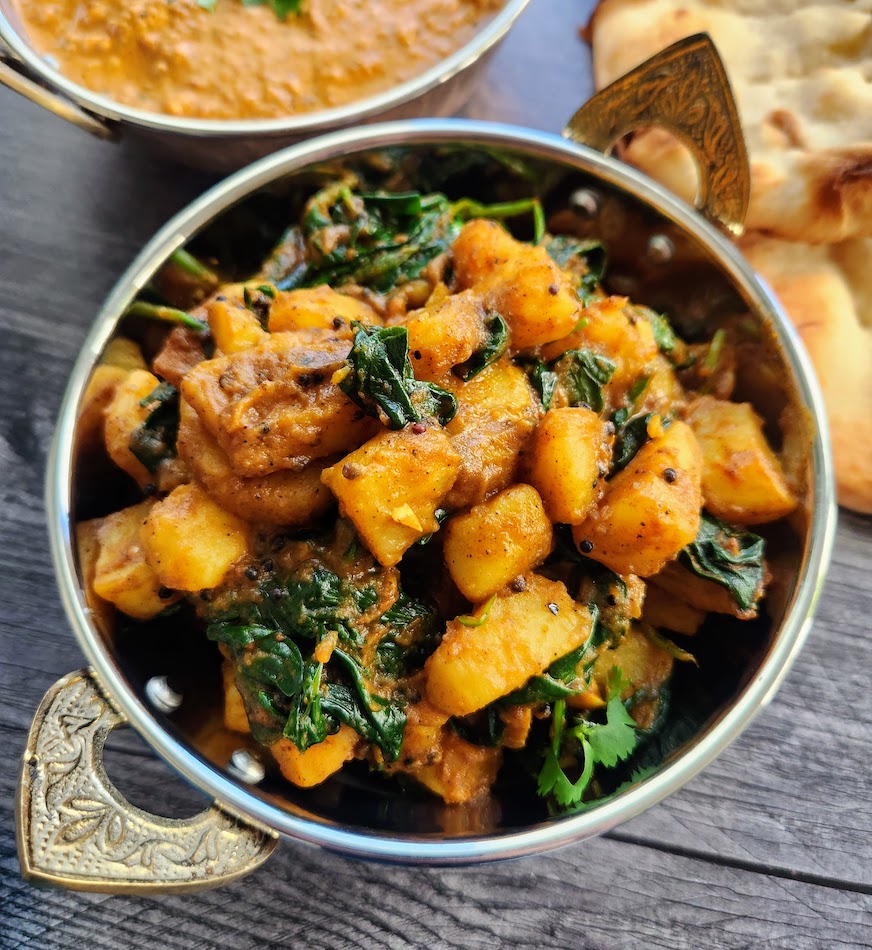
If you’re going to learn to make just one Indian dish, we suggest it be Saag Aloo. This is one of those recipes where the results are so much more than the effort put into it. With just a few simple ingredients and about 15 minutes, this easy saag aloo recipe delivers a beautiful, nutritious, and amazingly delicious curry!
This traditional Northern Indian Punjabi curry recipe follows our Curry Formula. Instead of starting with onions, this aloo saag recipe uses asafoetida (aka hing) for that onion and garlic flavor. Then, traditional Indian spices such as cumin, mustard, turmeric, and garam masala are added before the potatoes and spinach bring the dish together. The whole recipe is ready to go in just a few minutes. Serve it with rice or flat bread for an easy vegan or vegetarian meal, or bake a piece of fish or chicken for a heartier meal.


Mango Lassi Recipe

The sweet, spicy, and floral notes of Green Cardamom come together with the sweet and spicy notes of mango to create the mango lassi we know and love!
A Mango lassi is a traditional Punjab Indian recipe that you may have enjoyed at an Indian restaurant. And really, it’s just a spiced up smoothie!
With just five ingredients, this is a drink you can easily make just about anytime. Couple of hints to follow for a creamy delicious lassi.
- In India a freshly made yogurt called curd is used to make lassi. This curd yogurt is almost liquid, so use a regular unflavored yogurt instead of Greek yogurt. If you only have Greek yogurt, mix it with buttermilk or milk to make it almost liquid. We often make our lassis with buttermilk instead of yogurt to mimic the tangy loose Indian yogurt.
- You’ll need to remove the cardamom seeds from the pods. Cardamom pods are actually easy to crush and then the seeds will pop out. We suggest using a mortar and pestle to remove the seeds and then to crush the seeds. If you don’t have a mortar and pestle, you can do the same thing with a glass bottle on a cutting board.
- After crushing the cardamom seeds, blend them with the mango to both break down the seeds and the fibers of the mango.
When you’ve made your mango lassi, be sure to serve it ice cold!


Salted Lassi Recipe

Most of us are familiar with the sweet dessert-like mango lassis, but savory lighter versions are just as popular across India.
Often made with sparkling water, a salted lassi can be quite refreshing on a hot day. As with a sweet lassi, be sure to serve your Lassi thoroughly chilled.
You’ll need to grind your cumin seed for this recipe before roasting it. A simple pepper or salt mill will easily grind cumin seeds.
This recipe also calls for Kala Namak which is a Himalayan salt with just a bit of funk and tang. If you do not have Kala Namak, any salt will work.
Raita Recipe
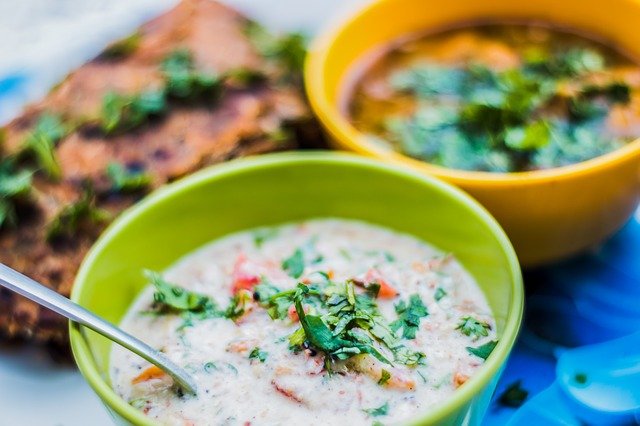
Yes, we know another yogurt recipe! Lentils and yogurt are included in most Indian meals, and raita is a classic Indian side dish.
Can’t take the heat? Raita to the rescue! In India, this yogurt salad is used to cool the palate between spicy bites. The coriander and cumin in this recipe should be toasted before being added. As to whether to grind the spices, that is up to debate! Grind them if you want the spices to blend into the background or crush them if you enjoy little bites with a burst of flavor.
Like Mexican salsas, raitas can be made with many different vegetables, fruits, and herbs. This recipe uses the traditional combination of cucumbers, carrots, mint, and cilantro that you’ll find in just about any Indian restaurant!

North Indian Raita

Just like some meals call for a simple side salad, you’ll find a simple cucumber or onion raita served with many Indian meals. Other Indian meals need a bit more veggies to balance them out, and then you’ll find a veggie packed raita served up.
This raita is one of the later – packed full of vegetables and with a bit more spice than found in basic raitas.


Chutneys

Chutneys are those little dishes with big flavors! Our favorite part of an Indian meal, Chutneys bring together fruits, vegetables, herbs, and spices to create intense flavors! each cuisine has little dishes of condiments with big flavors.
Mango Chutney
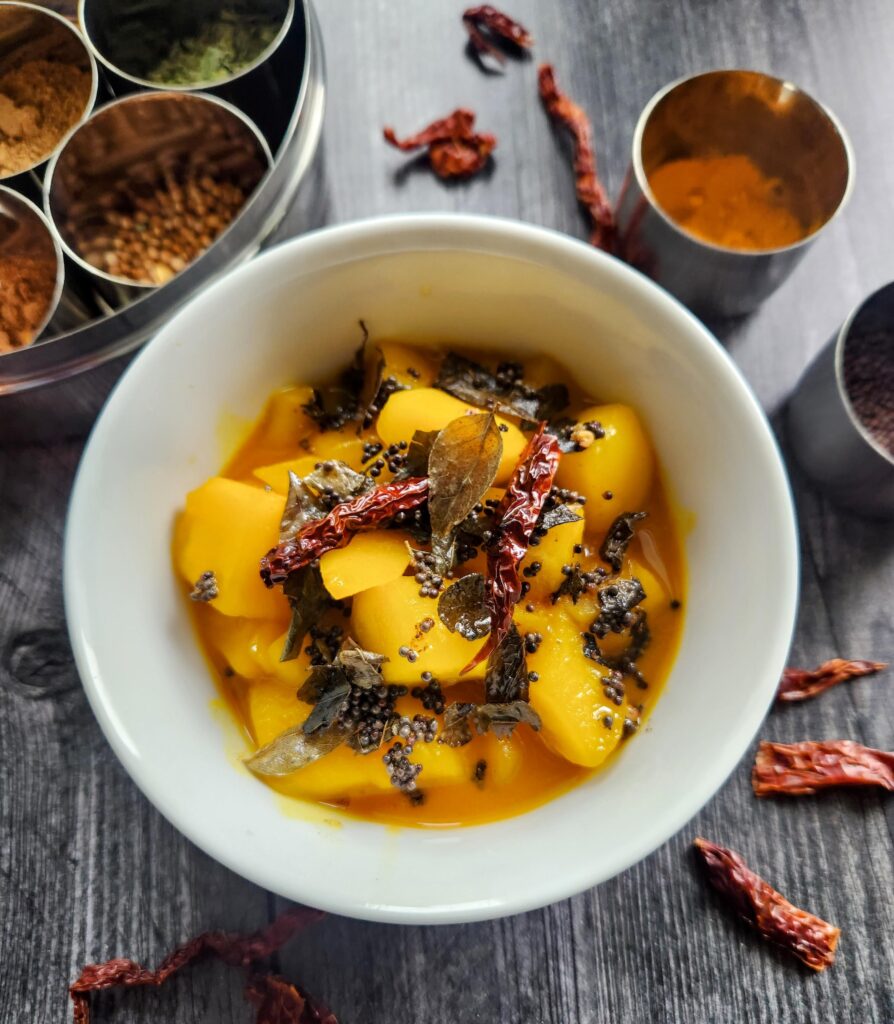
Grocery store mango chutney sold in the international aisle is usually overly sweet, gloopy thick, and just not good! But it turns out that version of mango chutney isn’t representative of the many different types of mango chutneys found across the many regions of India!
India is a large place with many different cultures and cuisines, and there seem to be just as many versions of this famous chutney! In some parts of India, green unripened (also called raw) mango is used with just a few spices. In other parts, ripe mangoes are cooked with many spices. Our easy mango chutney recipe falls between these two extremes as it calls for mangos with flesh that has turned yellow, but are still firm. At this point of ripeness, the mango does have a bit of the unique spiciness that makes mangos special, but not all the sweetness that will come when the mango fully ripens.


Ginger Peanut Chutney

One of our favorite chutneys, this simple recipe packs a big punch with just a few minutes effort!
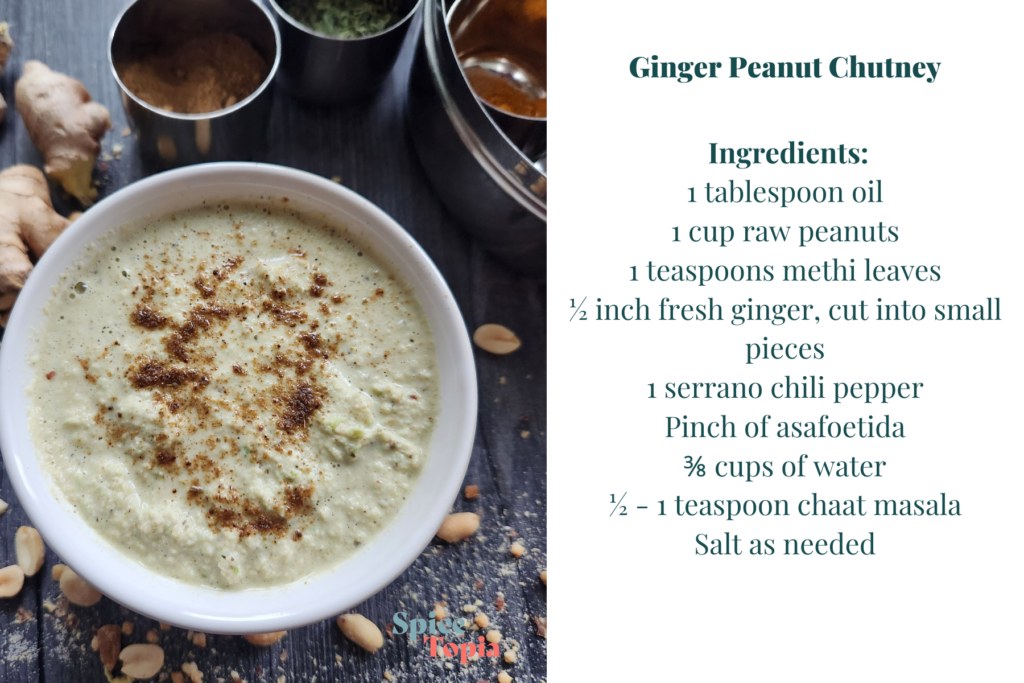

We hope these recipes have helped you use and enjoy your masala dabba.
Additional recipes and articles you may enjoy:
Northern Indian Flavors: The Story of North Indian Flavors
South Indian Flavors: The Story of Southern Indian Flavors
Learn more about the traditional Indian spice blend: The Story of Garam Masala
Goan Aloo Vindaloo Curry: A Vegan Crockpot Indian Recipe
South Indian Rice Pilaf: Coconut Pulao
Indian Watermelon Juice Recipe: A Traditional Masala (or spiced) Juice Recipe

